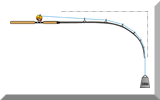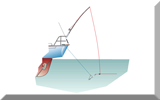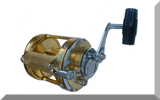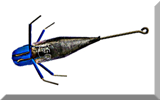- Home
- Cooking your Catch
- How to Cook Fish
How to Cook Fish: The Basic Techniques
The first rule of how to cook fish? Don't overcook it. And rules two and three?
- If it's been refrigerated, let it warm up to ambient temperature before it hits the pan, or it won't cook through evenly.
- Remove it from any water it's been lying in, pat it dry with a cloth or kitchen paper, season it with salt and leave for half an hour or so before cooking. This will improve both texture and flavour.
To anyone not entirely familiar with what goes on in the kitchen, some of the cooking terminology can be a little confusing - roasting, baking, searing, griddling, frying, poaching, steaming, braising, stewing, grilling broiling and so on.
And where to these mysterious processes take place? In the oven? On top of the stove?
Well, that would seem to be a good place to start ...
How to Cook Fish in the Oven
There are two primary methods of cooking fish in the oven - roasting and baking. Baking implies that the fish itself, or the dish in which it is cooked, is covered in some way. When roasting a fish, it's left uncovered, directly in the heat of the oven.
Baking
Baking is a good way to cook smaller whole fish or fillets that are on the thin side, The fish is wrapped entirely in greaseproof paper, or foil, or in a dish that is also covered in some way, trapping in steam and protecting the fish from the heat. Oven temperature will be around 180 to 200 degrees C (350 t0 400 degrees F, or Gas Mark 4 to 6), depending on the thickness of the fish. It won't take long to cook - just a little longer than frying or searing.
Roasting
Roasting is the way to go when cooking larger chunks of fish - a whole monkfish tail say, or perhaps a joint of swordfish. Brush the fish lightly with oil before putting in the oven to give it some protection from the heat, and cook it at high temperature to brown the surface before it's done. Try cooking it on a bed of vegetables, moistened with a splash of white wine, which can be used later to form the basis of a sauce.
How to Cook Fish on Top of the Stove
Searing and Griddling Fish
Searing fish is done in a solid, heavy-based frying pan. Moisten the pan with a little oil, preferable olive oil or sunflower oil, and bring it to a high temperature. Then brush a fillet of fish with oil and place it skin side down in the pan. Leave it sizzling for two to three minutes, resisting any temptation to shuffle it around, then turn it over and cook the other side. Providing the fish is small enough to fit in the pan, you can cook it whole - otherwise cut the head and tail off. Sardines in particular are absolutely delicious cooked like this, and they definitely taste best if eaten with the fingers.
The difference between searing and griddling is in the pan. A griddle pan has a ridged base, which leaves streaky brown marks on the crispy, cooked skin of the fish. Seared or griddled, fish cooked in this way contains very little fat, and is consequently low in calories - wonderfully tasty and healthy food.
Frying Fish
Shallow Frying is best done in a frying pan, using a little more oil and a little less heat than you would for searing a fish. Always use good quality oil - extra-virgin olive oil, sunflower oil or groundnut oil are ideal. Butter, too, can be really good but has a tendency to burn. Many cooks like to coat the fish with seasoned flour - not absolutely necessary but it does give the cooked fish an attractive, light crusty finish.
Deep Frying aboard a boat can be just plain dangerous. My advice would be to save this cooking method for a shore-side kitchen, which doesn't share a boat's tendency to move about. A Chinese Wok is the thing to use for deep frying. This implement conducts heat easily and evenly, and its sloping sides make it economical on oil. The oil must be extremely hot, before the fish goes in. If it isn't, the result will greasy and unpalatable - definitely not how to cook fish!
To test the temperature, drop a small piece of bread in it - if it sizzles immediately and goes brown within around 30 seconds, the oil's hot enough. If it doesn't, it isn't. The fish should be coated in some way to keep it together and prevent the moisture from escaping. This can be a light coating of flour or a full egg and breadcrumb batter. Remember to slide the fish gently into the oil so that it doesn't splash, and don't be tempted to put too many pieces in, or the oil temperature will drop.
Stir Frying too, is best done in a wok - again at extremely high temperature. Cut the fish into strips and toss them in cornflower, to give them a good chance of staying in one piece. Squid are really excellent cooked like this - more of which later.
Poaching Fish
This is a great way of cooking really fresh, non-oily white fish. It involves gently cooking the fish, fully submerged in a subtly flavoured liquid. Often a court-bouillon is used, which typically consists of fresh water, lemon juice, bay leaves, peppercorns, sea salt, parsley sprigs, celery and perhaps carrots, mushroom stalks and onions. Plain water just dilutes the fish's flavour without adding anything to it, but milk is good - and for some recipes coconut milk is the stuff to use.
To poach fillets of fish, place them in a single layer in a flameproof dish and pour the cold liquid over it until it's completely covered. Add an aromatic or two to your liking - dill, fennel or a bay leaf for example - and heat gently until the liquid is almost, but not quite, simmering. Once the liquid is up to temperature all but the thickest fillets will be fully cooked and ready for serving. Thick fillets may require up to 10 minutes poaching.
Steaming Fish
For steaming fish, you should use a purpose made fish steamer. This is a three-part utensil - a lower part which contains the water, a perforated tray above it which will contain the fish, and a lid.
To steam the fish, first pour a little water - around 50mm (2 inches) or so - in the base part. Then lay a sheet of lightly oiled foil in the tray part, and add your fish, which can be filleted, steaked or a whole fish. Laying the fish on a bed of aromatics will add their flavour to that of the fish. Then fold up the sides of the foil so that it will contain any juices that come out of the fish during steaming. Fit the lid, bring the water to the boil and steam the fish for a few minutes until it's just cooked through.
Braising Fish
Similar to poaching, but with the fish laid on a bed of vegetables and flavourings. Add just enough liquid to keep the fish moistened during cooking. Cook it gently in a heavy pan with the lid on. Take care not to overcook it.
Stewing Fish
The sauce base for the stew should be prepared well in advance, with the chunks of fish added right at the end of the cooking process. The chunks should be quite large, 50mm (2 inches or so) to avoid overcooking.
Grilling and Broiling Fish
You don't really hear much about broiling in the UK. It's a term more often used in the United States and Canada, where it means grilling with the heat coming from above - for Brits, this is cooking 'under the grill' with the fish in the grill pan. Either way grilling and broiling are truly excellent ways of cooking fish, particularly steaks or cutlets sliced from larger, firm-fleshed fish. Monkfish is an excellent candidate for this approach, as are tuna and the other pelagic gamefish of the open ocean.
When grilling on the barbecue, you should wait until the flames have died down and the coals are at their hottest before placing the fish on the grill. Turn the fish only once, or it will begin to fall apart. Unless that is, you use one of the long-handled hinged grill racks for holding the fish in place.
So that's How to Cook Fish, but how do you know when it's done?
White Fish
The flesh of these types of fish becomes opaque when cooked. Perfectly cooked, the middle will be only just cooked, white and still moist. Check to see by poking a knife into it.
Oily Fish
Red-fleshed fish like tuna are best (well, to my taste) if left a little rare like a fillet steak. If overcooked they'll become dry and tough, and even the cat won't be impressed.
And that pretty much answers the question 'How to Cook Fish?'
To recap, we've talked about:~
- How to cook fish on top of the stove, and
- How to cook fish under the grill, and
- How to cook fish on the grill, and
- How to cook fish in the oven
Ok, let's take a look at four sample recipes that illustrate each of the above ways of how to cook fish:~
- Fried Fish Recipes ~ Fried Sea Bream with Warm Tomato Vinaigrette
- Broiled Fish Recipe ~ Broiled Snapper with Salsa Verde
- Grilled Fish Recipes ~ Grilled Mackerel with Cumin and Harissa
- Baked Fish Recipes ~ Sea Bass Baked in Salt
Recent Articles
-
Sea Fishing Rods and Reels Must Be Compatible for a Balanced Outfit
Mar 08, 21 08:30 AM
A quality reel fitted to a quality rod doesn't necessarily make it a quality outfit. Your fishing rods and reels have to be properly matched if you're to get the best out of them, and here’s how -
Essential Lure Fishing Tips That All Saltwater Anglers Should Know
Mar 08, 21 04:51 AM
Which single lure fishing tip applies to trolling, jigging, baitcasting, spinning, fly fishing and any other branch of lure fishing? Well, it is the one at the top of this list -
Vital Jig Fishing Tips That You Really Cannot Afford To Miss!
Mar 07, 21 10:20 AM
Essential jig fishing tips to help you select the right lure for successful jig fishing, together with the techniques required to get the most out of your jig fishing outfit
























New! Comments
Have your say about what you've just read! Leave me a comment in the box below.